On November 30, 2024, Indian news outlet India Today published a controversial report alleging that doctors at West Bengal’s Jitendra Narayan Ray Hospital had decided to stop treating Bangladeshi patients. The article cited tensions between India and Bangladesh following alleged attacks on Hindu minorities in Bangladesh and perceived disrespect toward the Indian flag. However, the report is now under fire for using an unrelated image of Muslim protesters, which critics argue perpetuates Islamophobic narratives and misrepresents the issue.
Unrelated image fuels islamophobia allegations
The use of an irrelevant photo of Muslim protesters, which bore no connection to the hospital incident, has been widely condemned as a deliberate editorial choice to present Bangladesh as a radical Islamic state. The image detracted from the actual issues at hand—diplomatic tensions and healthcare policies—and instead stoked communal sentiments. Experts and commentators have accused India Today of deliberately framing Bangladesh as an Islamic state, fueling religious biases and communal tensions.
“This is not just unethical journalism; it’s an attempt to fuel communal tensions and perpetuate harmful stereotypes,” said Dr. Ayesha Khan, an expert in South Asian media studies. “Such framing distracts from the diplomatic and healthcare-related concerns and instead fosters Islamophobia.”
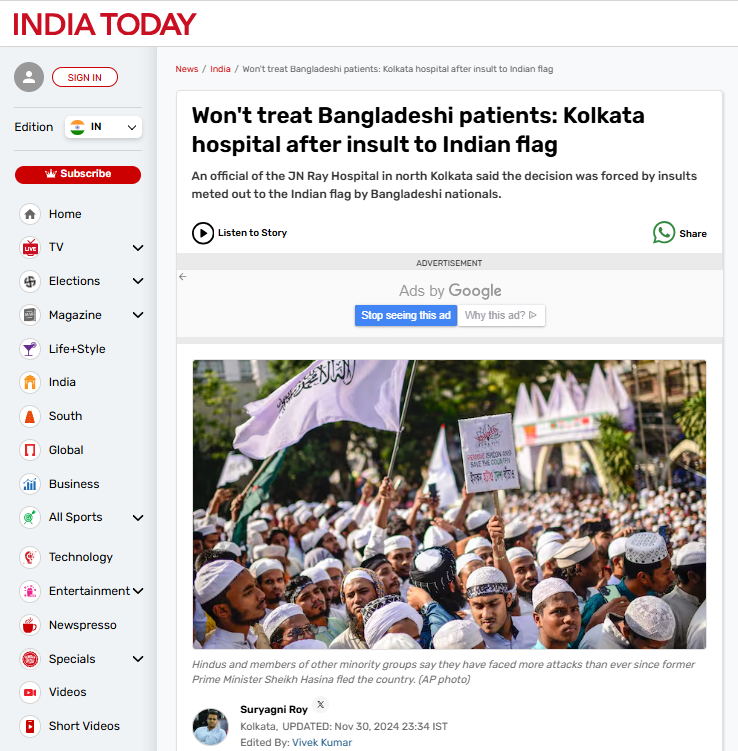
Photo: irrelevant photo of Muslim protesters in the news used by India Today
“This photo choice is not accidental. It’s a calculated move to associate Bangladesh with Islamic extremism,” said Professor Tanveer Alam, a researcher on media ethics in South Asia. “This kind of framing deepens the perception of Bangladesh as an ‘enemy state’ rather than a neighbor with whom India shares deep cultural and historical ties.”
Polish journalist Karolina Walczowska, in an interview with The Rummage, shared a similar incident in Poland. She described how a photo editor at Onet mistakenly published an incorrect image—a photograph from Prague was used to depict an LGBT pride event in Białystok. The backlash on social media was so severe that it led to the editor’s dismissal. “This highlights the importance of accuracy in media and the repercussions of misrepresentation,” Walczowska emphasized, drawing parallels to the ethical lapse in India Today’s coverage.
Misinformation and media accountability
The controversy surrounding India Today’s report has also drawn attention from international experts. Jakub Majmurek, Associate Professor and film expert, and Mateusz Mazzini, Associate Professor and senior journalist, have voiced their concerns about Indian media’s role in disseminating misinformation. Speaking to The Rummage, both emphasized the need for accountability and urged India Today to retract the misleading article to prevent further propagation of false information.
“Journalistic integrity demands accountability. This article’s reliance on a misleading image shows a lack of editorial diligence and undermines public trust,” said Majmurek. Mazzini added, “Retracting the article and issuing a public apology would set an example and help restore credibility.”
Media ethics questioned
The use of the unrelated image has reignited debates about journalistic ethics and responsibility. Critics argue that such editorial choices not only misinform but also deepen societal divides.
“Media outlets have a duty to report with accuracy and neutrality, especially on sensitive cross-border issues,” said Professor Anwar Ali, a media ethics researcher. “Framing a diplomatic incident through a religious lens is both irresponsible and dangerous.”
Global reaction and implications
The incident has drawn international condemnation, with commentators and analysts labeling it as a clear instance of Islamophobia in Indian media. Renowned author and activist Arundhati Roy stated, “This is not just poor journalism—it’s dangerous. Such reporting normalizes prejudice and fuels communal divisions.”
Beyond the domestic impact, this incident damages India’s image globally, casting doubt on its secular and democratic values. The report has also highlighted the increasing role of sensationalism in Indian media, prompting calls for stricter regulations to uphold ethical standards.
The India Today article exemplifies how biased framing and the use of irrelevant imagery can distort public discourse. The backlash from experts, media analysts, and the public highlights the urgent need for greater accountability in journalism. Ethical reporting must transcend communal or religious biases, focusing on accurate and impartial storytelling to inform readers without fueling prejudice.
Ownership and political ties raise questions about bias
India Today is part of the India Today Group, owned by Aroon Purie, a prominent figure in Indian media. The group’s editorial direction has often aligned with the broader ideological narrative promoted by the ruling Bharatiya Janata Party (BJP), led by India Prime Minister Narendra Modi. Analysts have noted that India Today, like many Indian media outlets, has increasingly leaned toward promoting a Hindu nationalist agenda.
“This pattern of framing stories through a communal lens isn’t new,” said Dr. Megha Kaushik, a political media analyst. “Media outlets like India Today often align their reporting to reinforce narratives that favor the ruling party’s Hindu nationalist ideology, which alienates minority groups.”
The use of the unrelated image in this report is being interpreted as part of this broader agenda. Critics argue that it reinforces a “Muslim threat” narrative by associating Bangladesh, a Muslim-majority nation, with negative stereotypes, further deepening communal divides.
Bangladesh: A target of media framing
In recent years, India Today and several other Indian media outlets have been accused of portraying Bangladesh as a hostile Islamic state, often framing its Muslim-majority identity as a threat to India. This report is being criticized as another example of such an agenda, where sensationalism is used to align with Hindu nationalist ideologies and inflame communal tensions.
Dr. Ananya Mukherjee, a political analyst specializing in India-Bangladesh relations, commented, “India Today’s portrayal of Bangladesh frequently casts the nation in a negative light, focusing disproportionately on religious divisions and portraying Muslims as aggressors. This is not just journalistic negligence; it reflects a broader narrative being pushed to undermine India-Bangladesh relations.”
Critics argue that by consistently framing Bangladesh through the lens of religion, India Today undermines the complex and multifaceted relationship between the two nations, which includes economic partnerships, cultural exchanges, and shared histories.
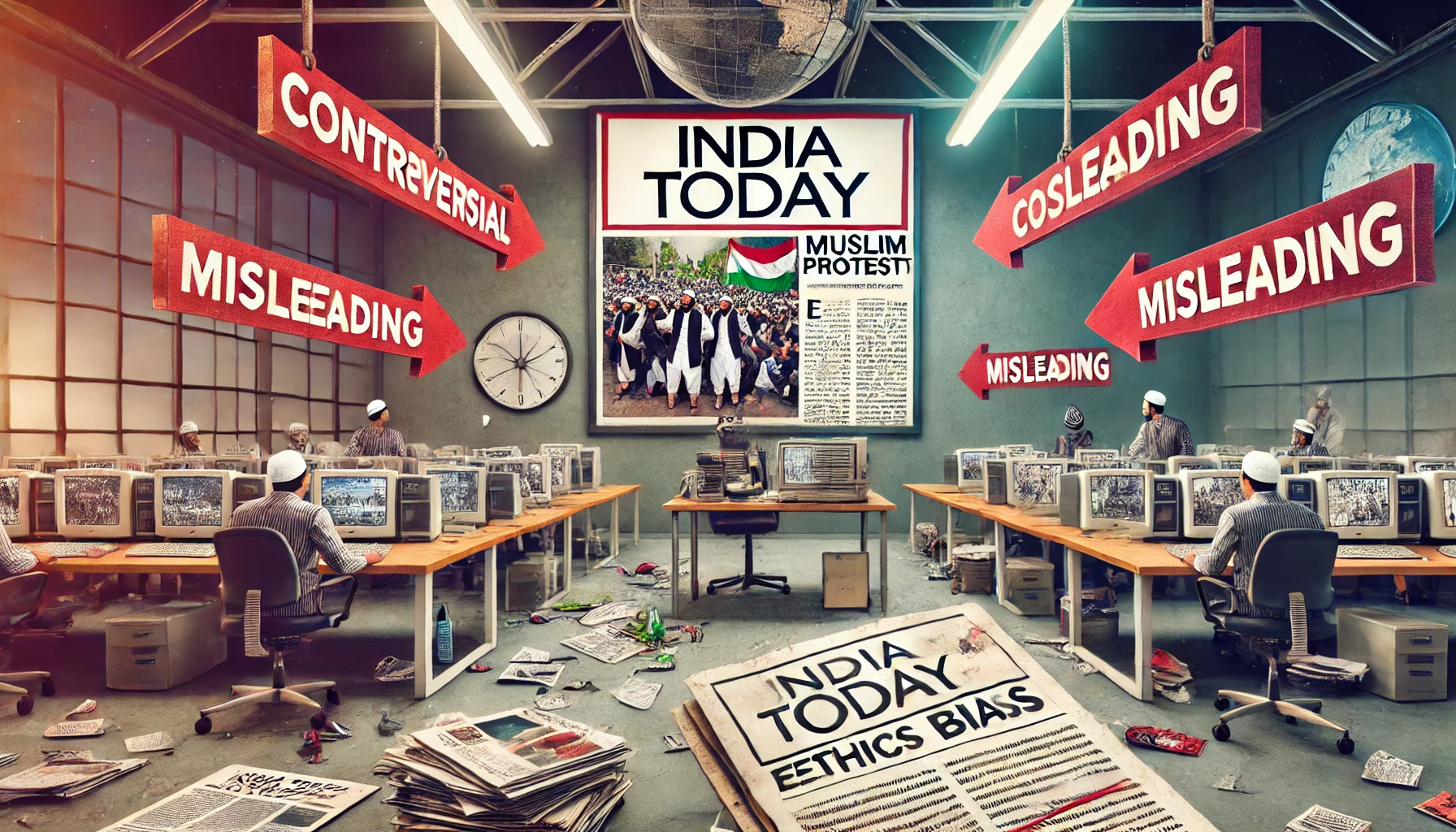

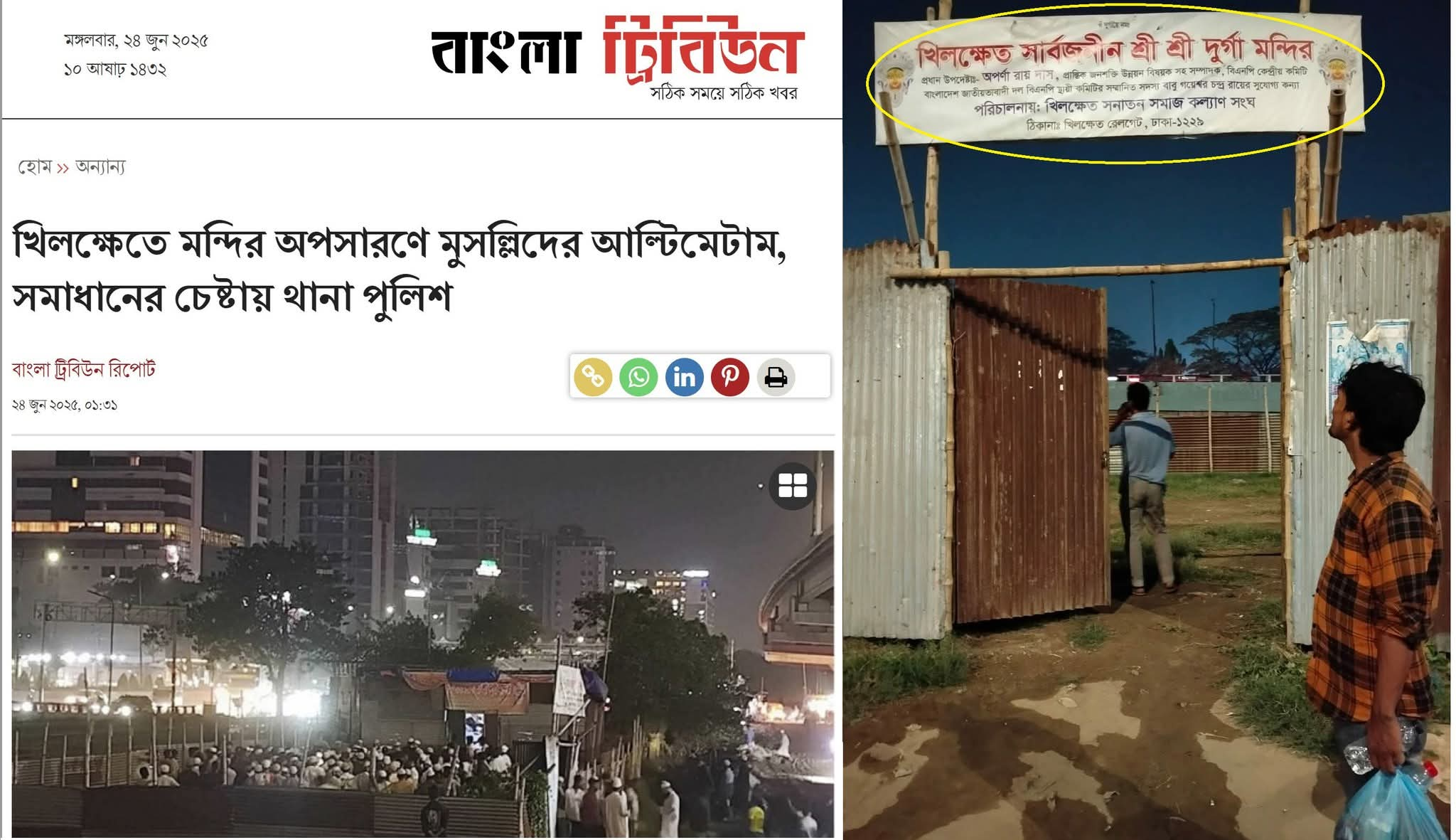
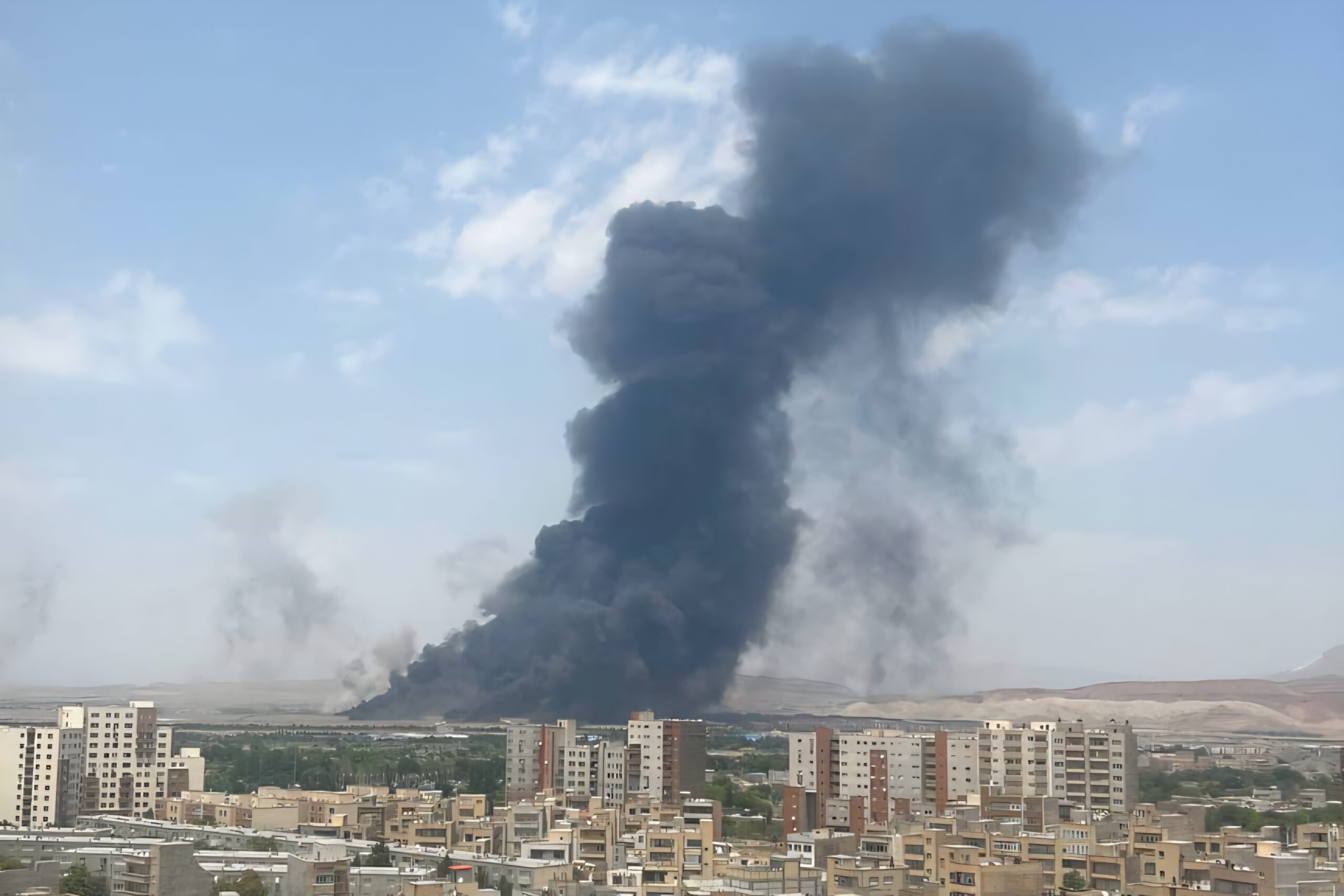
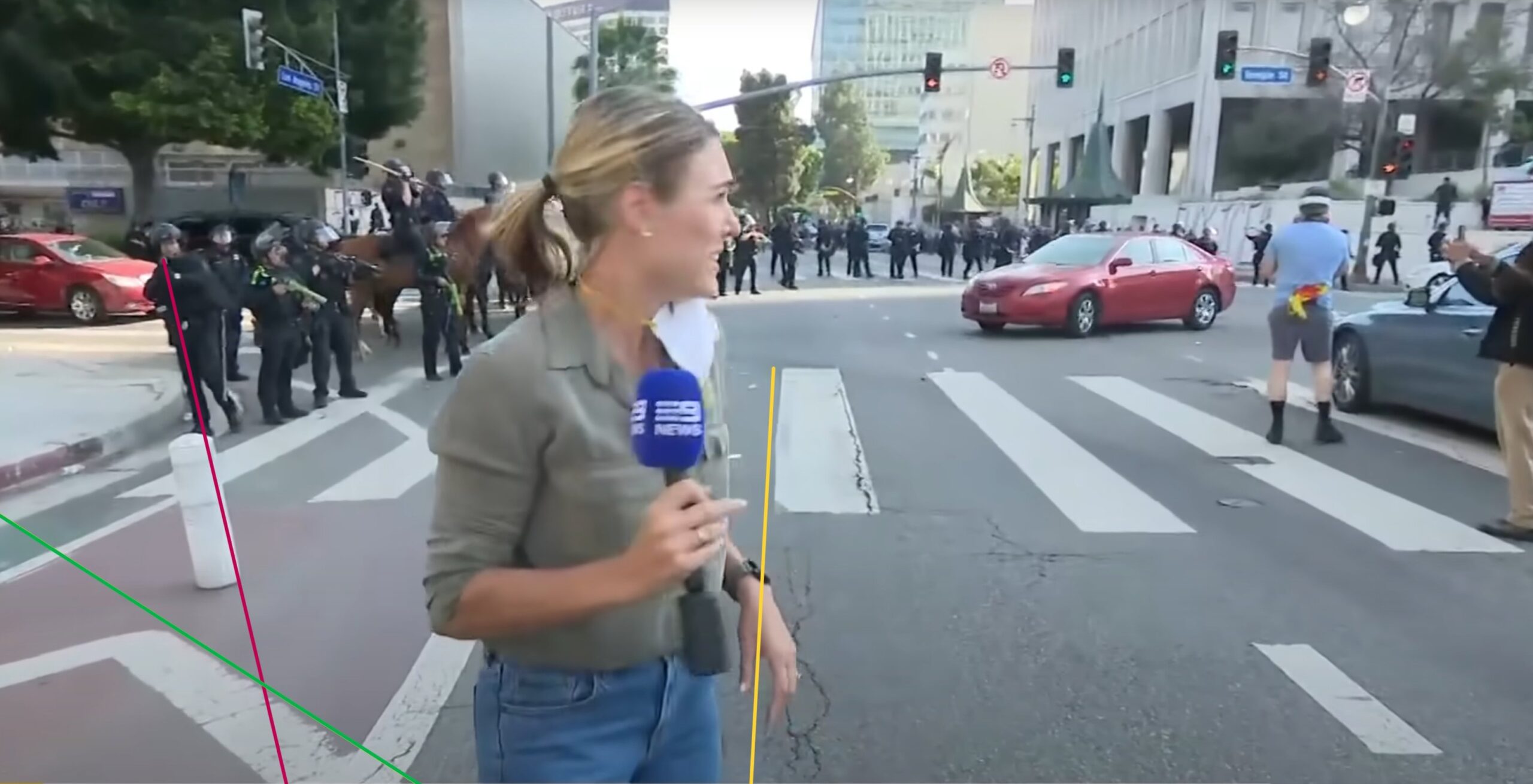
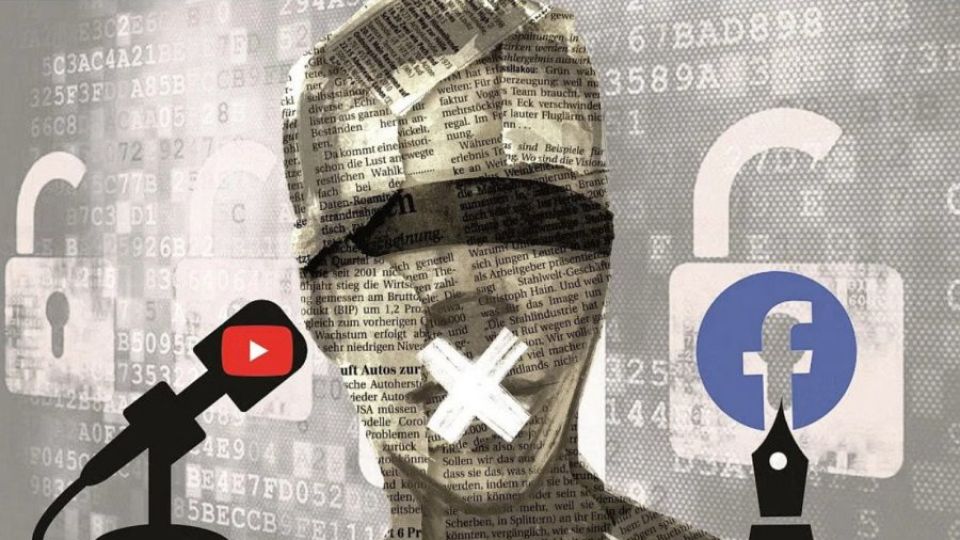
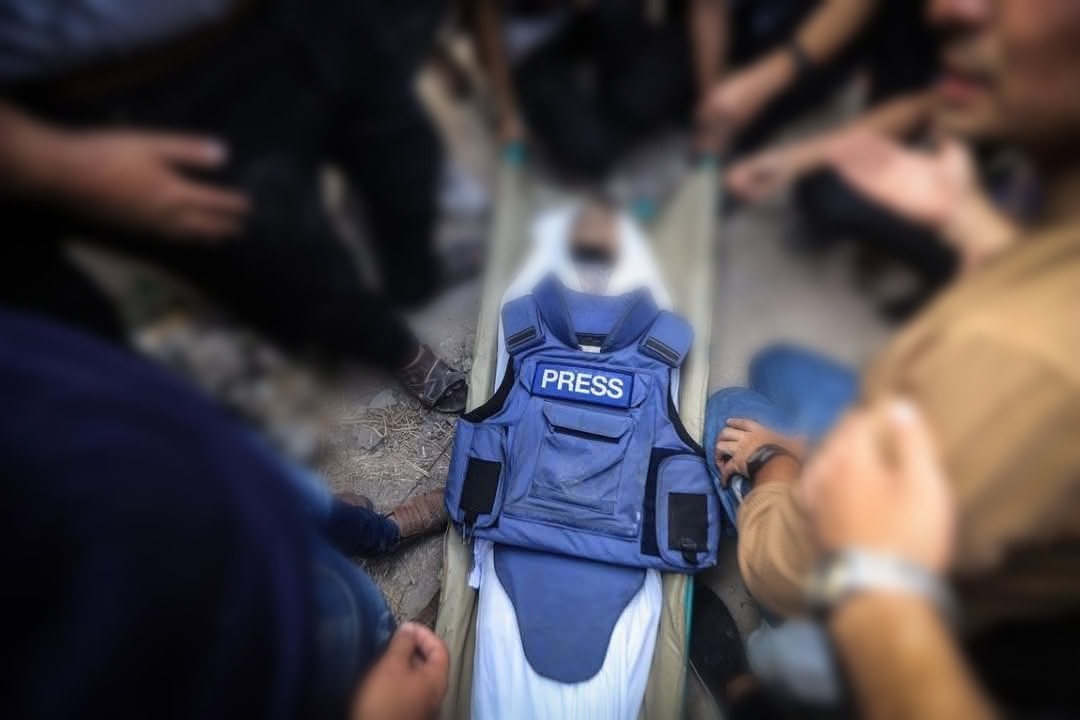
Leave a Reply